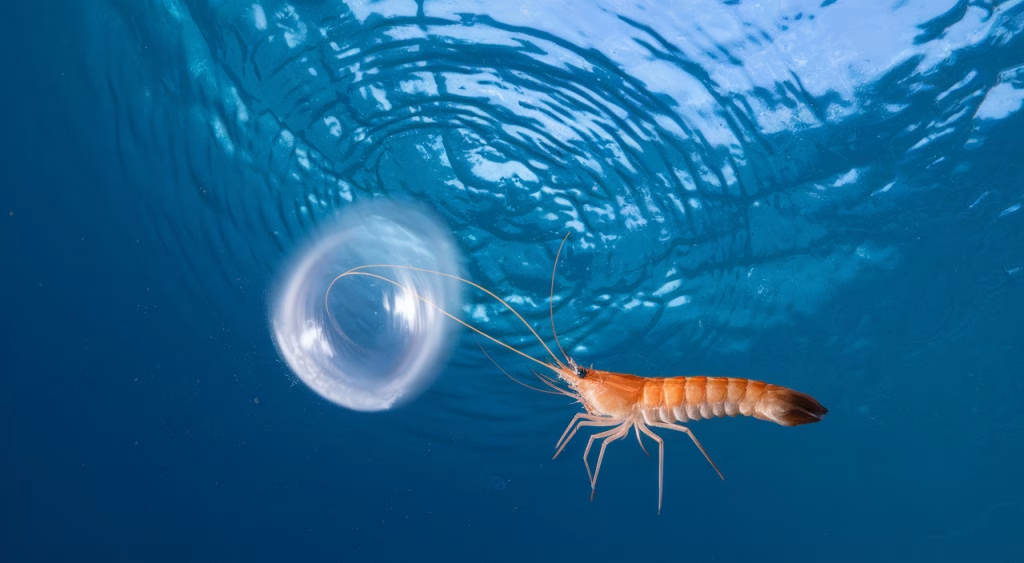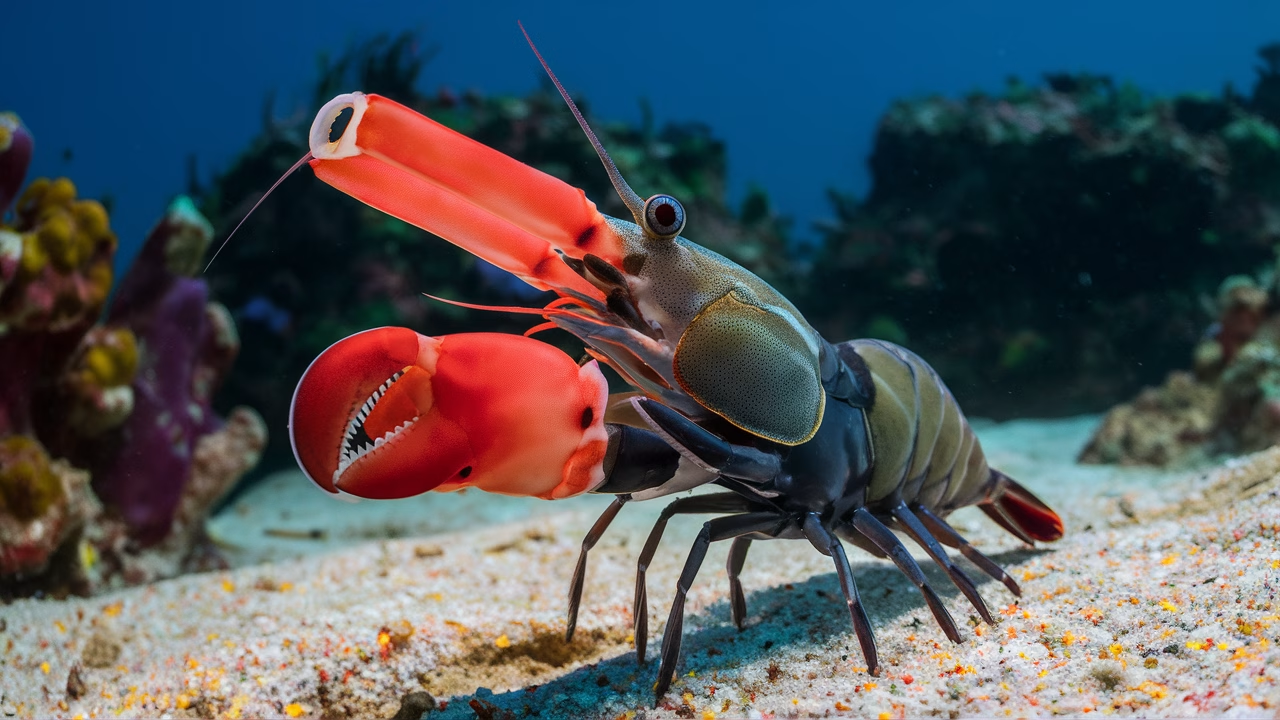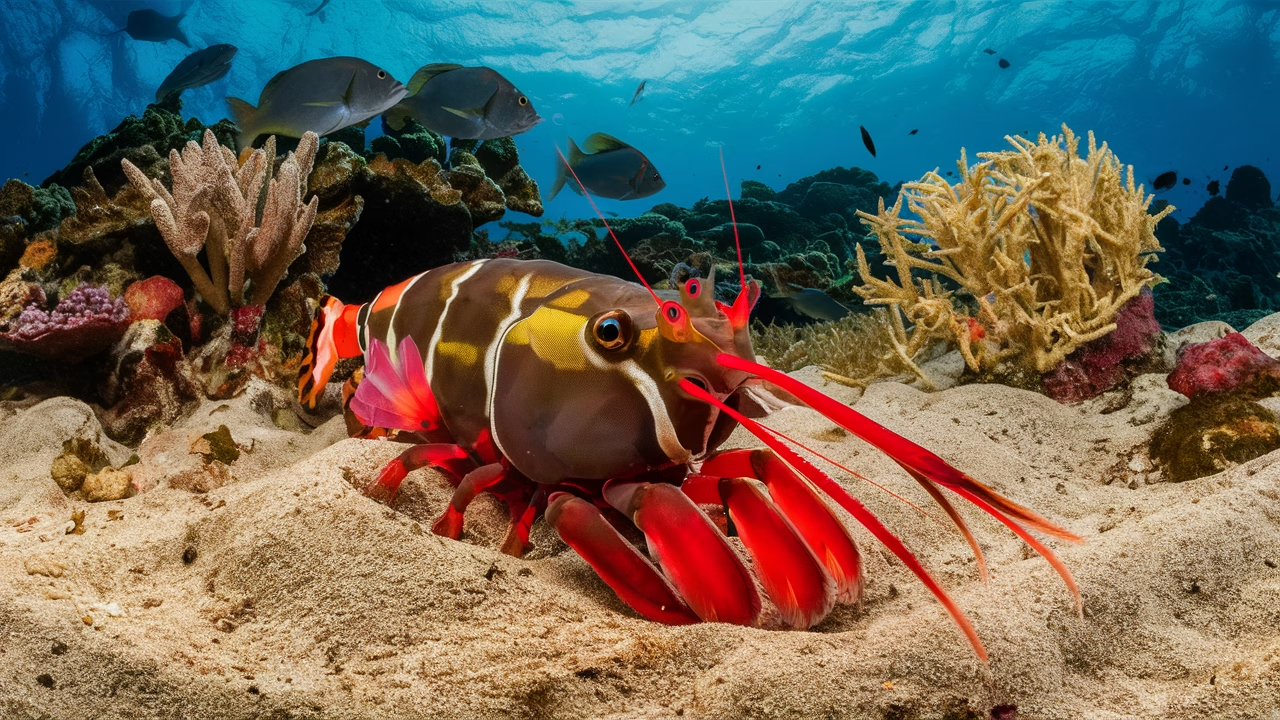How does the pistol shrimp create bubbles hotter than the sun?
The pistol shrimp accomplishes this stunning phenomenon through a superfast snap of its specialized claw. This snap generates cavitation bubbles that implode with incredible force, briefly creating marine heat rivaling the surface of the sun and producing powerful shockwaves strong enough to stun or kill prey instantly.
TL;DR: The Pistol Shrimp’s Superheated Snap — Summary
- Heat Burst: The pistol shrimp’s claw generates cavitation bubbles reaching temperatures of over 4,700°C — hotter than the surface of the sun.
- Stunning Power: The resulting shockwave is powerful enough to knock out nearby prey and competitors.
- Claw Mechanics: The oversized claw rapidly closes, forcing out a jet of water that triggers the cavitation bubble.
- Marine Role: Pistol shrimp are crucial ecosystem players, often partnering with gobies and helping maintain reef biodiversity.
- Fun Fact: Despite its size, this shrimp can be as loud underwater as a gunshot, making it one of the loudest marine animals.
The Phenomenon of Pistol Shrimp’s Superheated Cavitation Bubbles
What is a Pistol Shrimp?
When you first see a pistol shrimp, also known scientifically as Alpheidae, it looks like any typical small crustacean — until you notice one dramatically oversized claw. This isn’t just an evolutionary quirk; it’s nature’s most powerful underwater weapon system that creates extraordinary marine heat through cavitation bubbles.
The specialized claw functions like a biological pistol, hence the name. Inside, powerful muscles contract rapidly to build massive tension, then release it like a spring-loaded mechanism. This creates an ultra-fast water jet reaching up to 60 miles per hour through a narrow channel in the claw. The sudden water displacement triggers an incredible event known as cavitation — the key to understanding how pistol shrimp generate their legendary heat bursts.
Understanding Cavitation Bubbles
Cavitation bubbles form when rapid pressure changes cause water to vaporize momentarily, creating temporary voids in the liquid. When these bubbles collapse, they release extraordinary amounts of energy — and that’s where the magic of marine heat generation happens.
So how do pistol shrimp create cavitation bubbles? The process involves precise physics and specialized anatomy:
- Specialized claw structure with a plunger and socket mechanism
- Ultra-fast contraction speed of less than 1 millisecond
- Narrow channel that accelerates water jetting
This bubble collapse creates shockwaves so powerful they can instantly stun prey like crabs, small fish, and other shrimp. The cavitation bubbles don’t just make noise — they become microscopic furnaces that briefly outshine the sun itself.
The Science Behind the Heat Generation
Here’s where pistol shrimp truly defy expectations. When those cavitation bubbles implode, they don’t just create shockwaves — they generate incredible marine heat reaching temperatures above 4,700°C (8,500°F).
To put this in perspective, the sun’s surface temperature is roughly 5,500°C. This means the pistol shrimp’s cavitation bubbles can briefly create heat that surpasses our nearest star. For a microscopic fraction of a second, this tiny crustacean becomes an underwater thermal powerhouse.
The extreme heat generation occurs because all the energy from the collapsing bubble concentrates into an incredibly small point. This intense pressure and temperature combination even creates a brief flash of light through a process called sonoluminescence — making the pistol shrimp a literal light-and-heat producer in the ocean depths.
| Phenomenon | Details |
|---|---|
| Cavitation Bubble | Vapor bubble formed due to rapid water jet |
| Temperature | Over 4,700°C |
| Shockwave Strength | Up to 80 decibels, knocks out prey |
Impact of Pistol Shrimp on Marine Ecosystems
Beyond being aquatic thermal generators, pistol shrimp play crucial roles in marine ecosystems. Their most famous partnership involves gobies — small, colorful fish that form remarkable symbiotic relationships with these heat-producing crustaceans. The pistol shrimp excavates and maintains complex burrows in sandy sea floors, while the goby acts as a vigilant lookout, warning of approaching predators.
The ecological impact extends far beyond simple partnerships. Pistol shrimp actively reshape coral reef substrates and soft-bottom marine environments through their constant burrowing activities. This continuous excavation oxygenates the sea floor and creates vital nutrient cycling — benefits that support entire communities of marine life.
Their powerful snapping also influences local predator-prey dynamics. The intense shockwaves and noise can deter larger predators from heavily populated pistol shrimp areas, creating protected zones where smaller marine species can thrive. This makes them unexpected guardians of marine biodiversity.
When considering the broader impact of pistol shrimp on marine ecosystems, these small crustaceans emerge as underwater architects, biodiversity protectors, and thermal engineers all rolled into one remarkable package.
Fascinating Facts about Pistol Shrimp
The world of pistol shrimp contains even more surprises beyond their incredible heat generation abilities:
- Species Variety: Over 600 known pistol shrimp species exist worldwide, each with unique cavitation bubble characteristics.
- Stealth Masters: Their burrow entrances are expertly camouflaged, making these marine heat generators nearly invisible.
- Regenerative Weaponry: If the snapping claw is lost, pistol shrimp can regenerate it — sometimes the smaller claw transforms into the new heat-generating weapon.
- Habitat Engineers: Their digging creates essential microhabitats for marine algae, worms, and countless other sea creatures.
- Sonar Confusion: Military and research sonar systems often detect pistol shrimp colonies as interference due to their powerful acoustic signatures.
If you’re ever kayaking through tropical waters and hear underwater popping sounds like distant firecrackers, you’re likely above a busy pistol shrimp community creating their signature cavitation bubbles and marine heat bursts.
Final Thought
The pistol shrimp proves that extraordinary marine heat generation can come in the smallest packages. In less than a millisecond, this tiny crustacean creates cavitation bubbles that challenge our understanding of biological thermal limits. Its signature snap isn’t just an impressive display — it’s a perfect fusion of physics, biology, and thermal dynamics that continues to fascinate scientists worldwide. Next time someone mentions marine life, you can surprise them with the incredible story of nature’s smallest heat-generating powerhouse.
Frequently Asked Questions
- How loud is a pistol shrimp?
The snap can reach up to 210 decibels underwater — louder than a gunshot. - Can pistol shrimp hurt humans?
While not dangerous to humans, a close-range snap can startle and may cause minor injury in rare cases. - Do both claws snap?
No, only the larger claw is the snapping claw; the smaller claw assists with feeding and mobility. - Is the heat really hotter than the sun?
Yes! The temperature within the collapsing cavitation bubble can exceed 4,700°C — briefly hotter than the sun’s surface. - Why doesn’t the shrimp get hurt?
Its claw is highly specialized to contain and release this energy without damaging itself. - What do pistol shrimp eat?
They feed on small fish, worms, and crustaceans — stunned by their shockwave first. - Where can you find pistol shrimp?
They inhabit shallow tropical and subtropical waters — from mangroves to coral reefs worldwide.





